Hierarchical Clustering¶
Warning
This page is work in progress.
Hierarchical Clustering¶
Hierarchical clustering is a data analysis method that builds a hierarchy of clusters by either successively aggregating individual data points into clusters (agglomerate approach) or dividing a large cluster into smaller ones (divisive approach), based on their similarity.
In hierarchical clustering, the data is not partitioned into a particular cluster in a single step. Instead, clusters are formed sequentially, with each step involving the merging of the two nearest clusters at a lower level into a higher-level cluster. This process continues recursively until all data points are clustered into a single group or until the desired cluster structure is achieved.
The following table shows the required and optional fields to generate hierarchical clustering visualization
| Attributes | Required/Optional |
|---|---|
| Visualization Type | Required |
| Relationship | Required |
Steps to generate Hierarchical clustering graphs¶
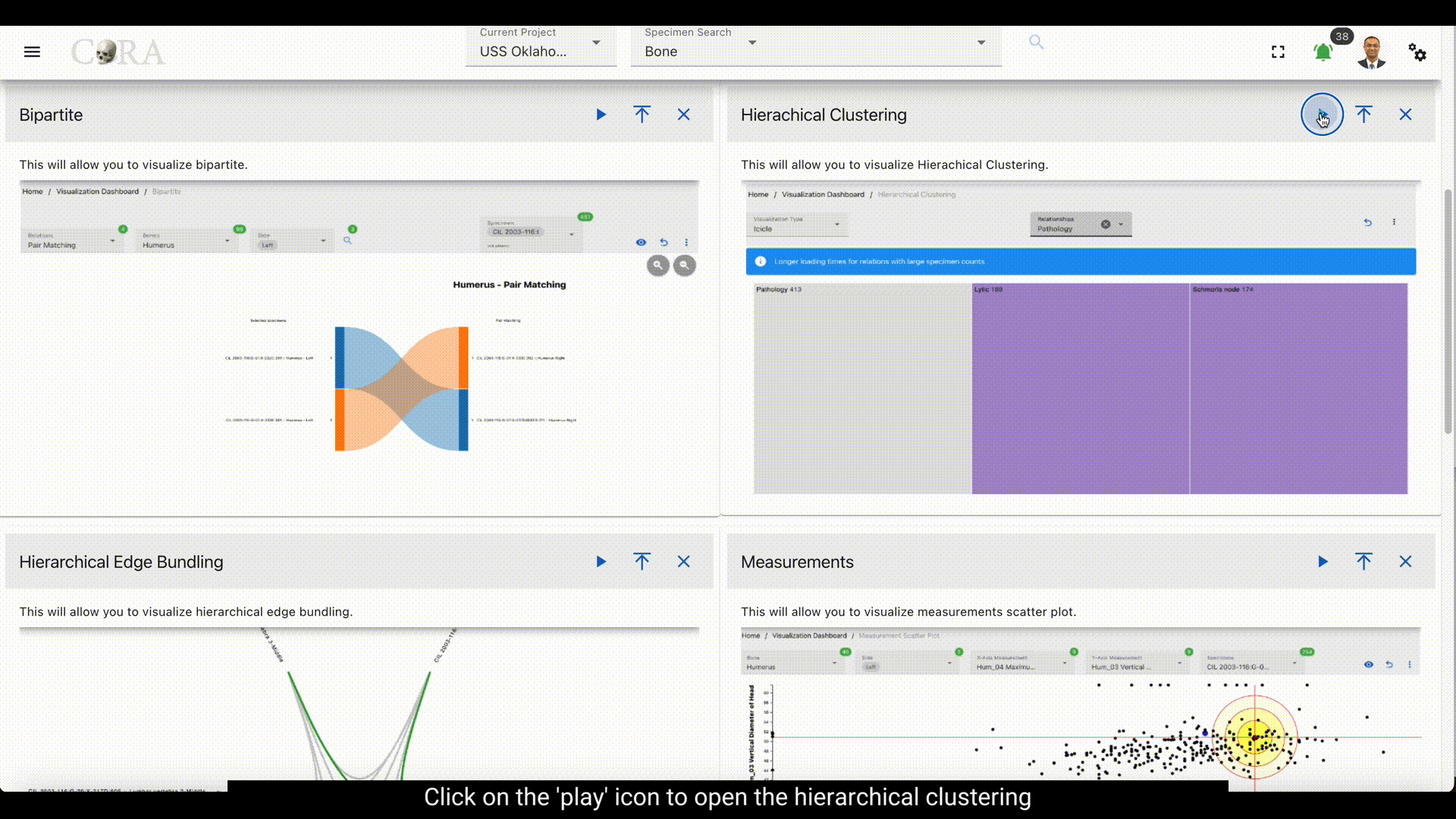
Step-1: Select Visualization type¶

Select a type of visualization for the hierarchical clustering. The available visualization types are shown in the below table.
| Visualization Types |
|---|
| Icicle |
| Treemap |
| Sunburst |
| Circle Packing |
| Indented Tree |
Step-2: Select a relationship¶

Select a relationship that is to be used in the hierarchical clustering.
Step-4: Visualization¶
After selecting the desired relationship the selected visualization is automatically generated. Each visualization type is interactive and can be changed until the desired output is achieved.
Different visualization types that are generated are shown below.
Icicle¶
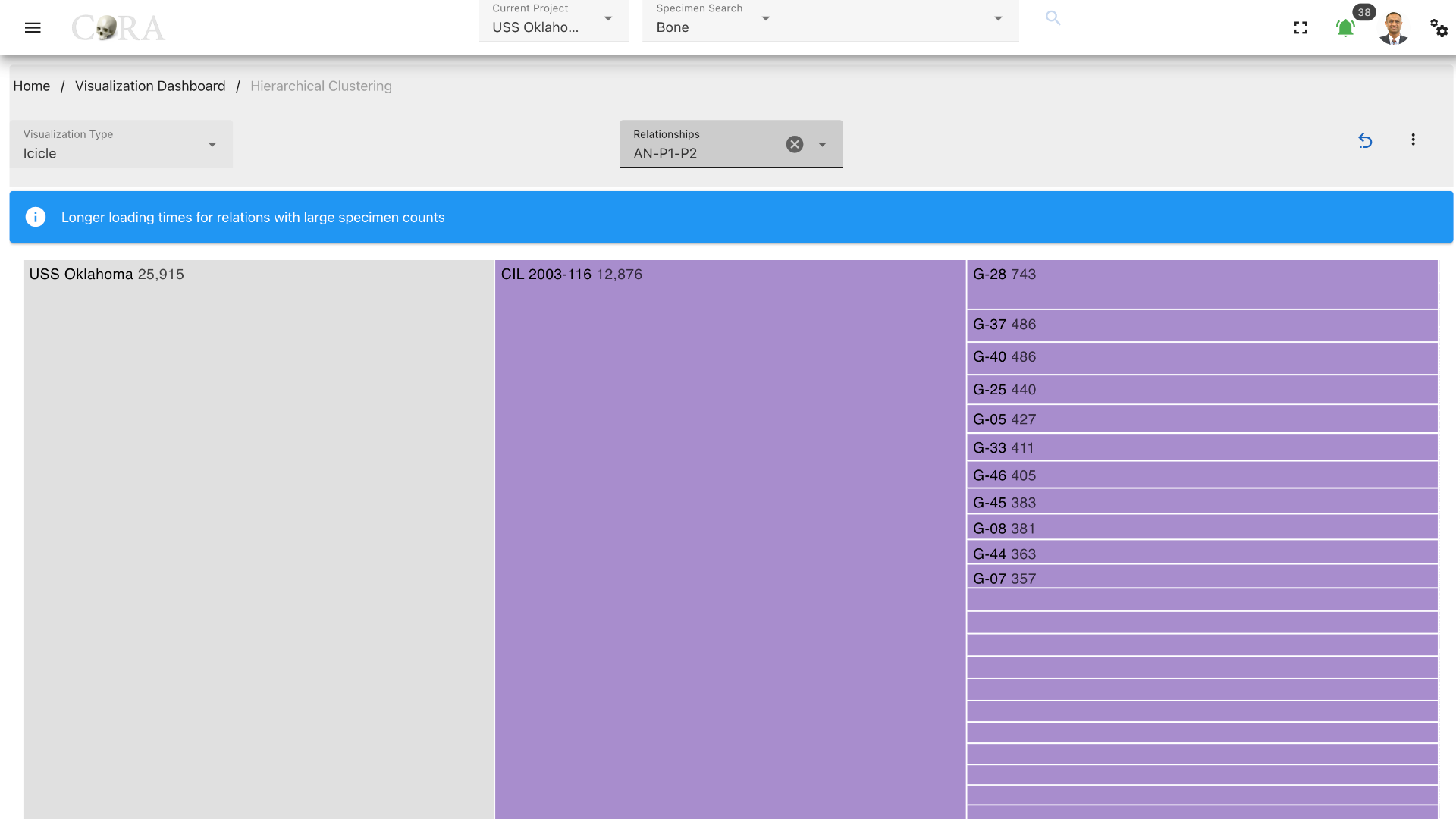
Treemap¶
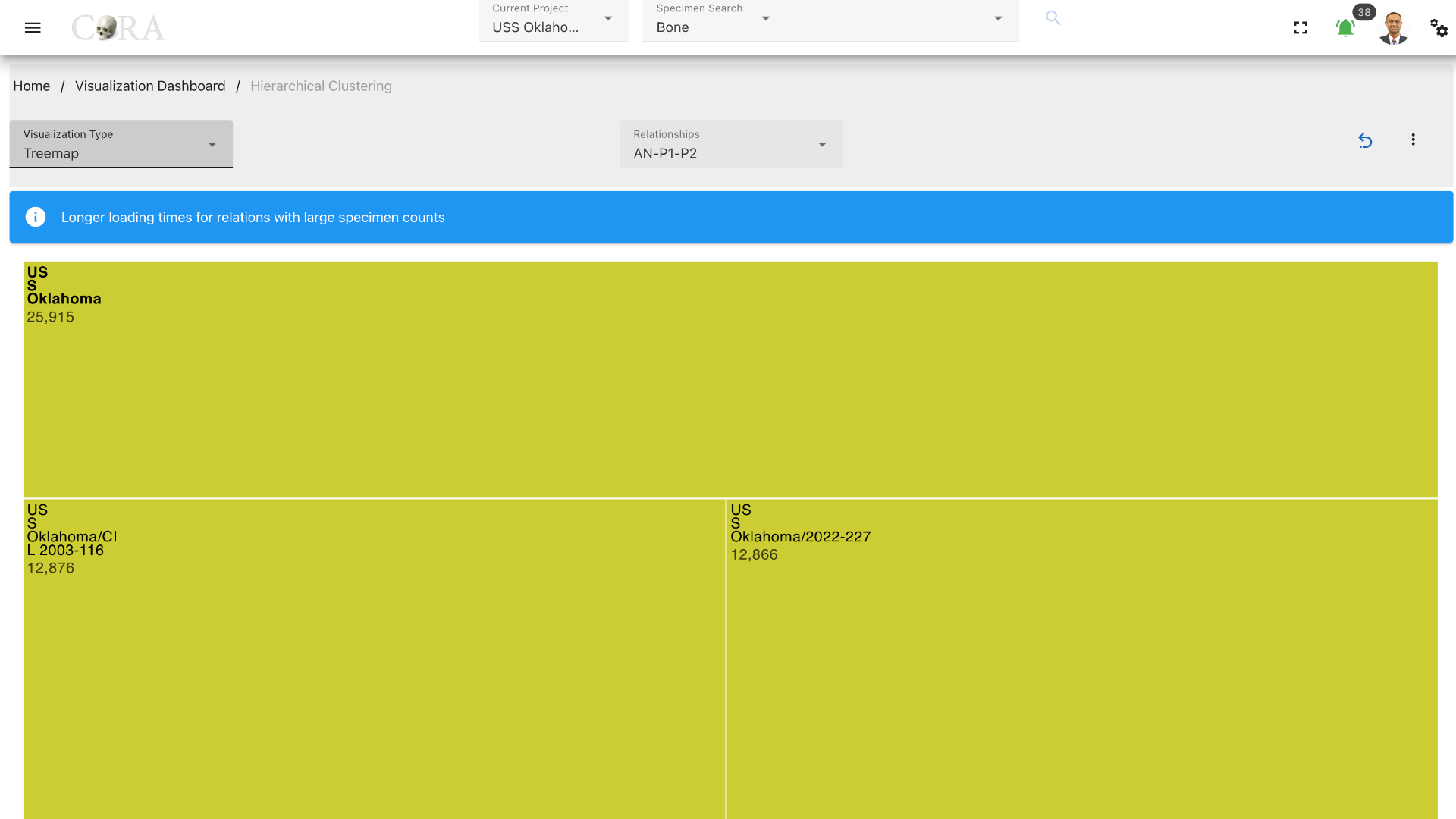
Sunburst¶

Circle Packing¶
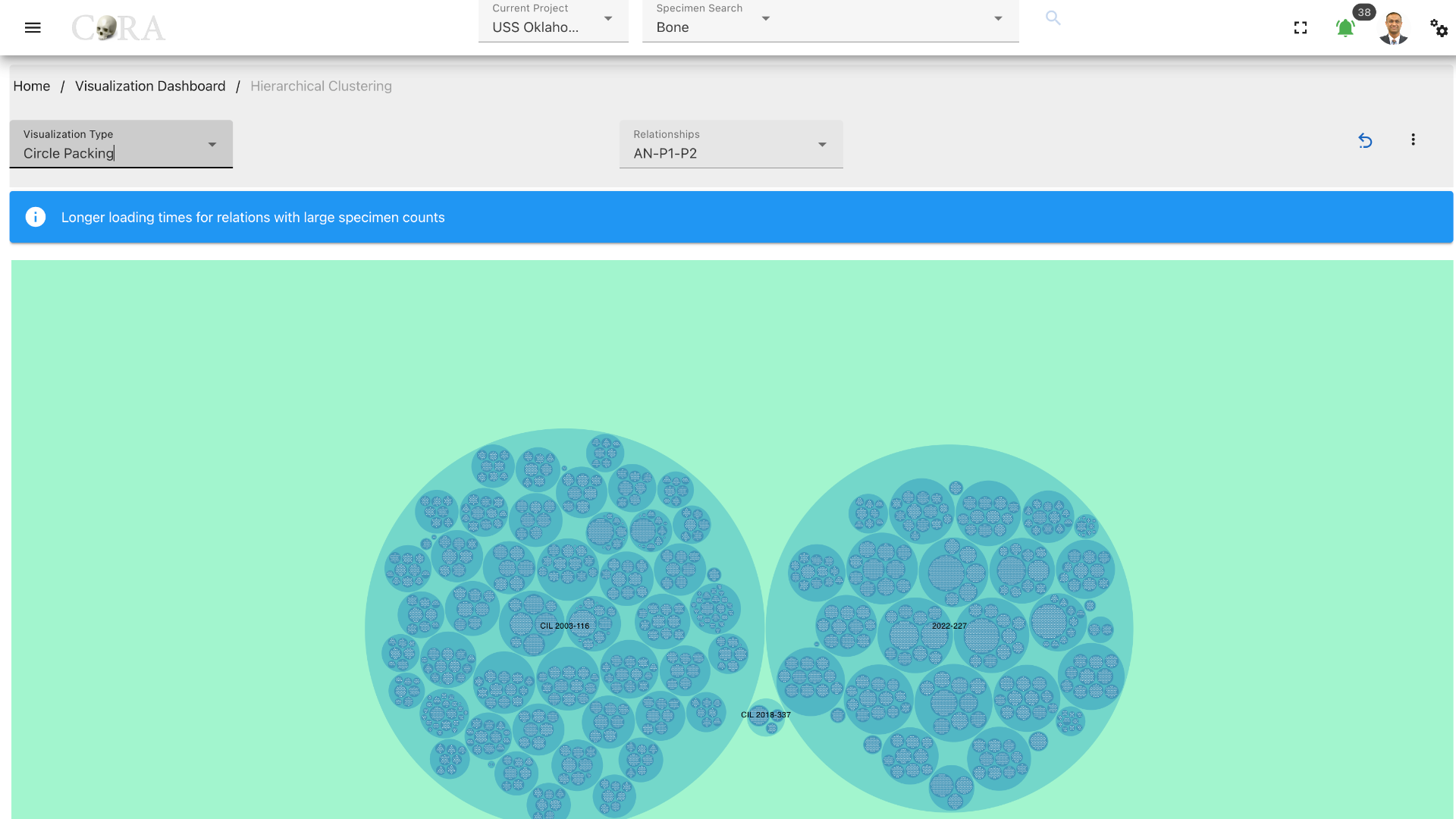
Indented Tree¶
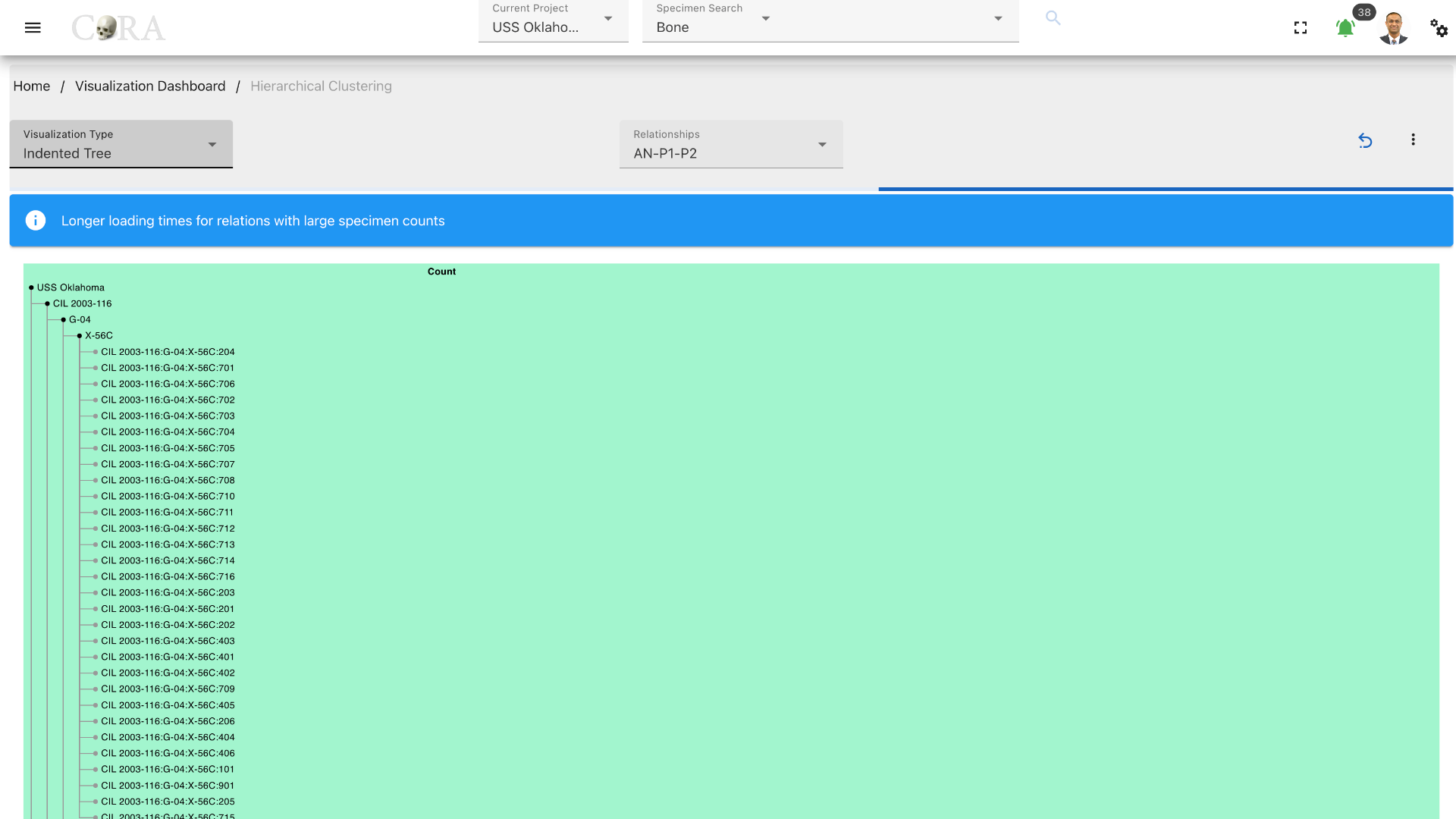
More Options/ Filters:¶
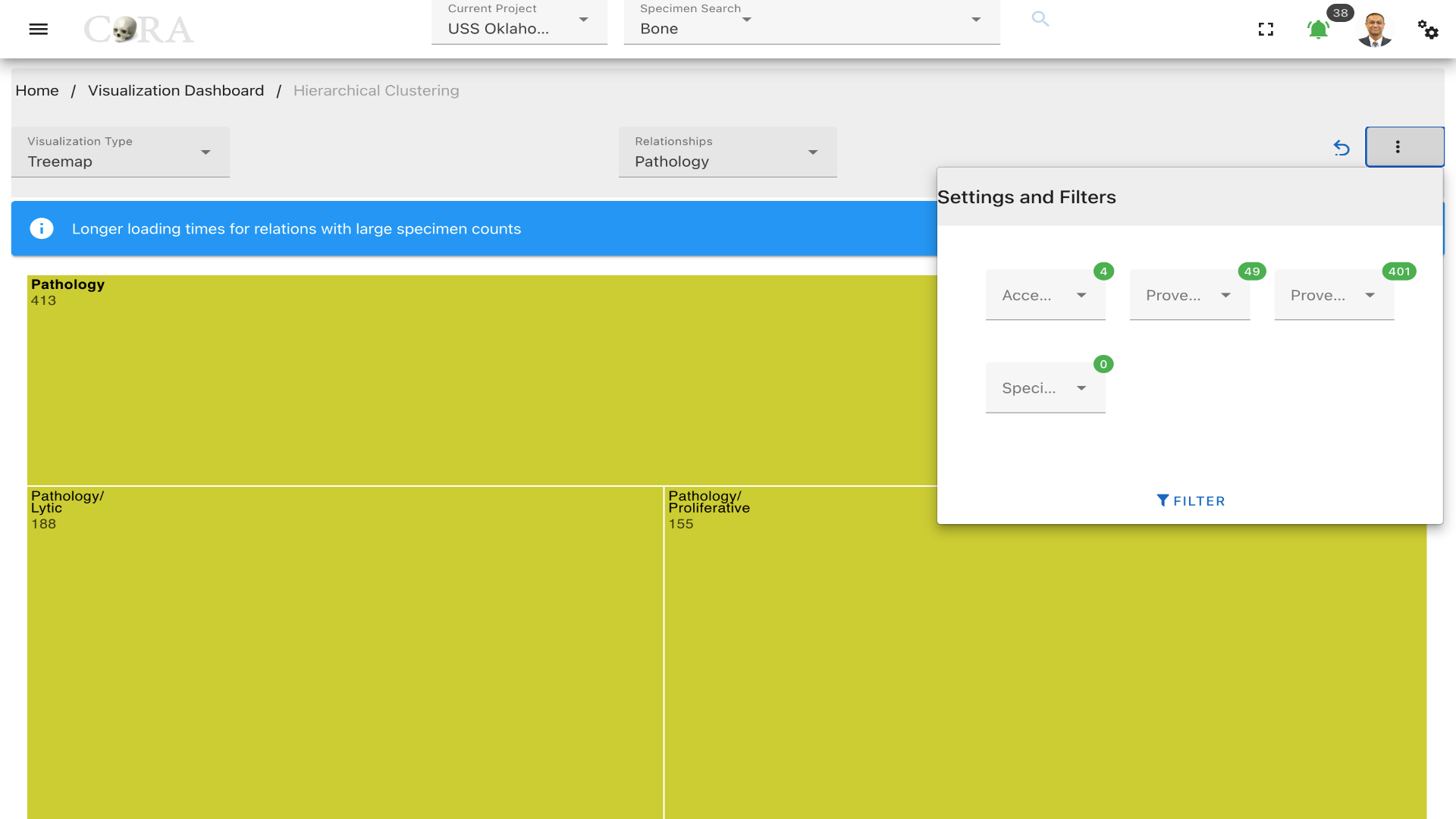 Click on the kebab menu in the top right corner to find more options. These options include filtering the specimens by
Accession Number, Provenance 1, Provenance 2 and a particular specimen can also be selected.
Click on the kebab menu in the top right corner to find more options. These options include filtering the specimens by
Accession Number, Provenance 1, Provenance 2 and a particular specimen can also be selected.
Created: 2023-12-18